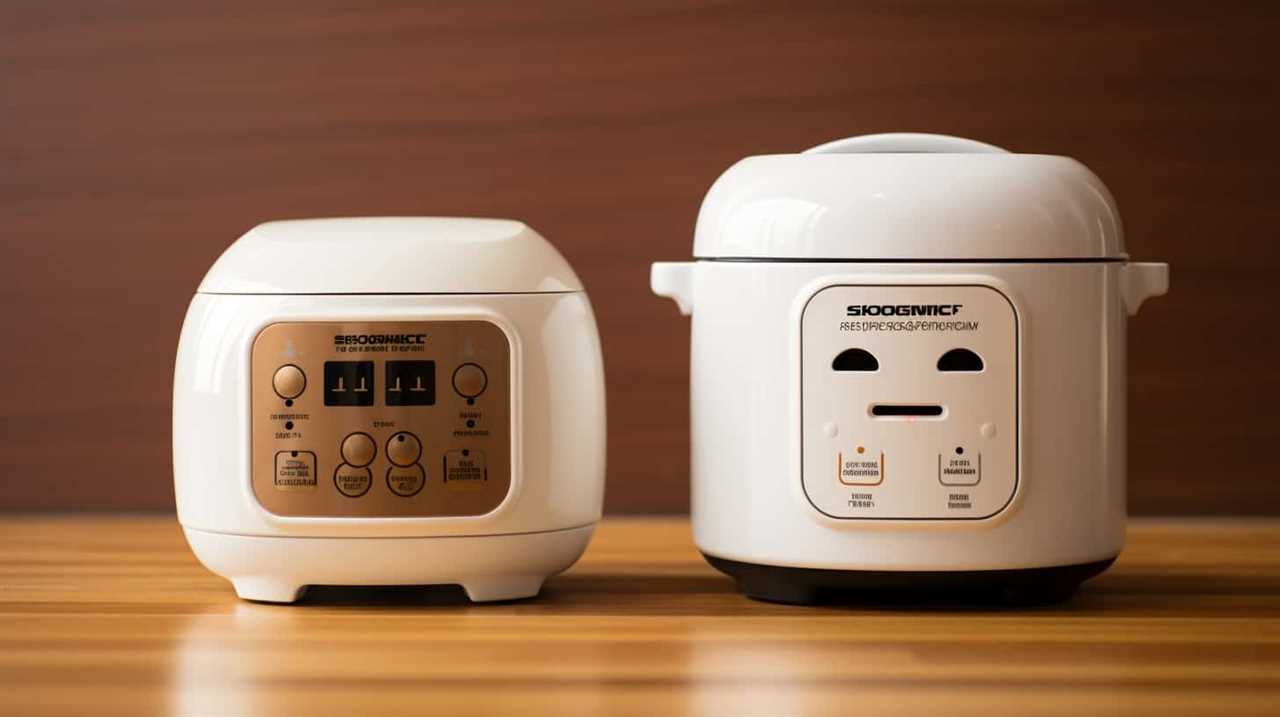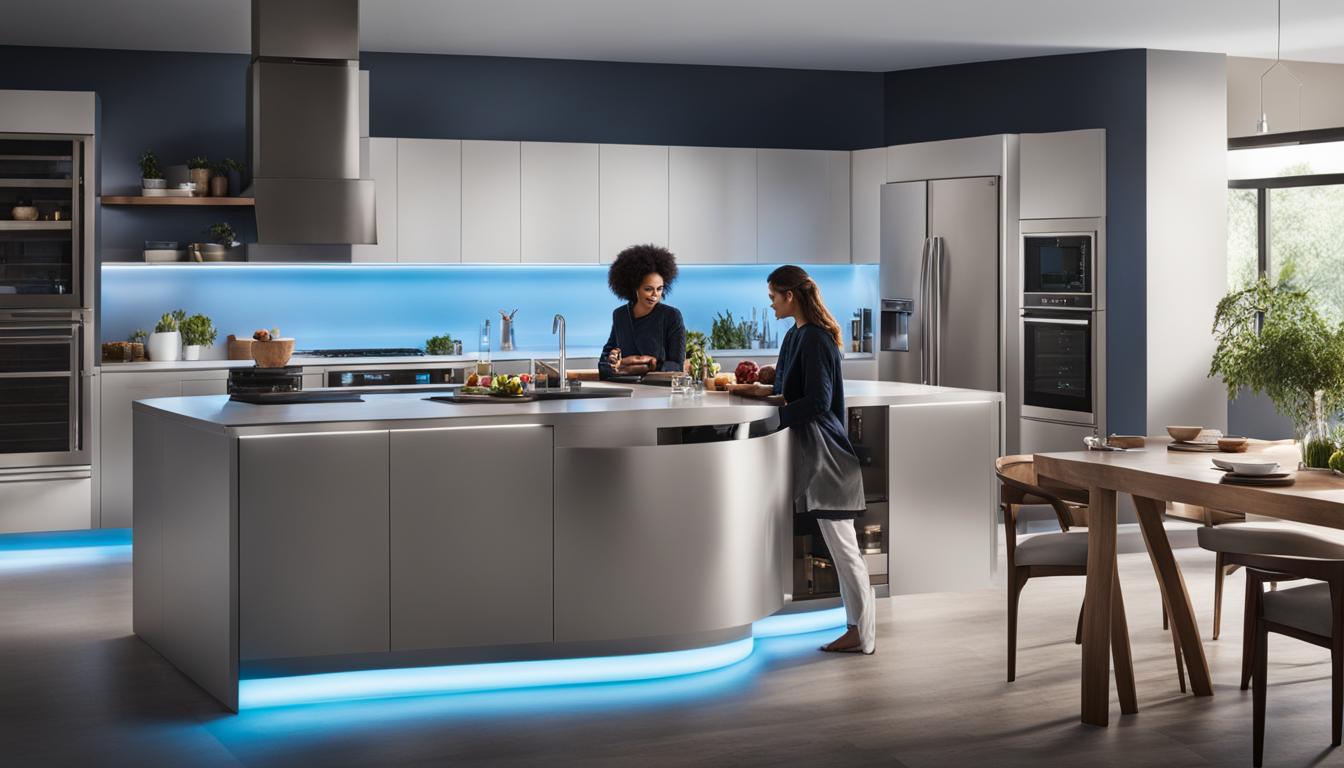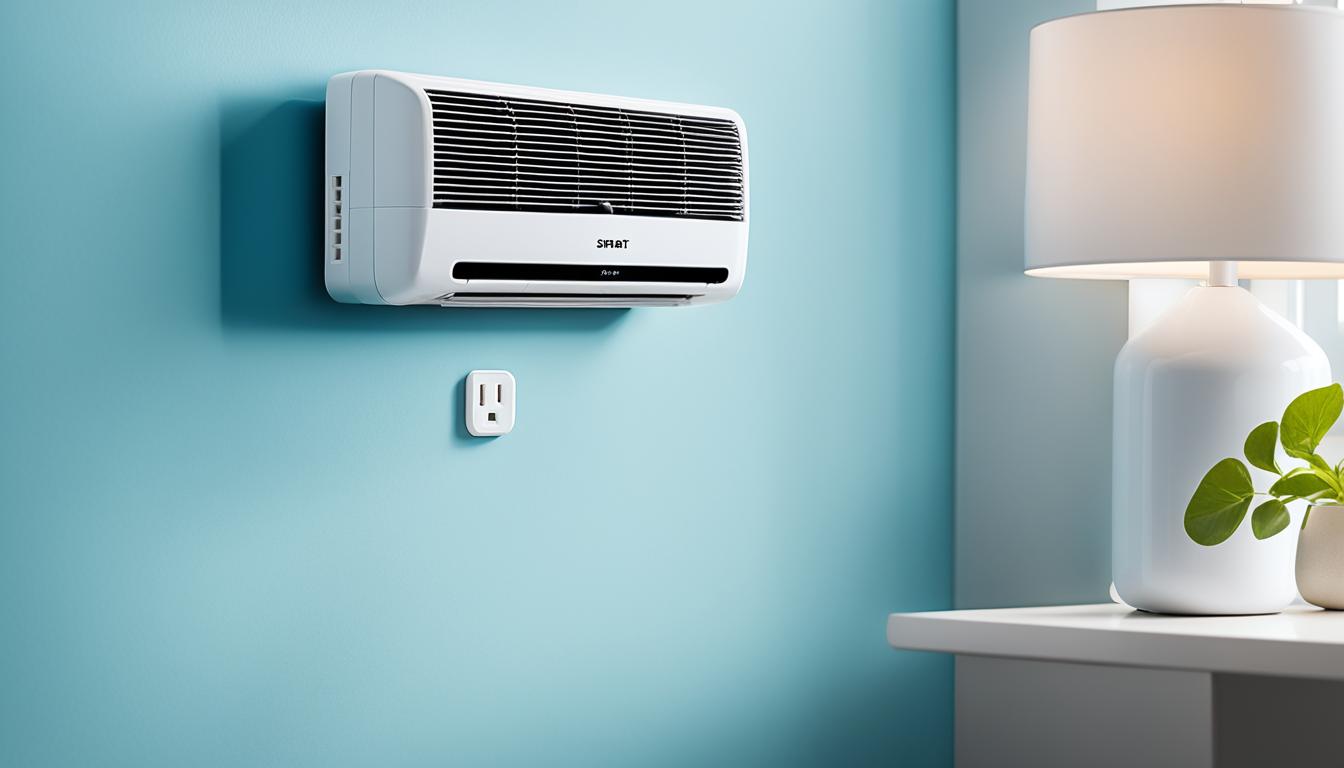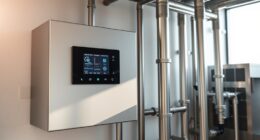Have you ever felt like your home is a symphony, with each appliance playing its own unique tune?
Well, integrating smart home appliances is like conducting that symphony, ensuring that all the instruments play in perfect harmony.
In this guide, we will explore the process of integrating smart home appliances and achieving mastery over your home automation.
From understanding the different types of smart home appliances to assessing compatibility with your existing infrastructure, we will cover all the essential steps.

We will also delve into choosing the right smart home hub, integrating voice control, and even troubleshooting common integration issues.
So, grab your baton and let’s dive into the fascinating world of smart home appliance integration!
Key Takeaways
- Integrating smart home appliances leads to increased energy efficiency, optimizing energy usage and reducing wastage.
- Integrating smart home appliances enhances convenience and comfort, allowing for remote control and automation of tasks.
- Thoroughly evaluating the existing infrastructure compatibility is crucial before integrating smart home appliances.
- Setting up and connecting smart home appliances involves ensuring compatibility, following setup instructions, and troubleshooting any issues that may arise.
Understanding Smart Home Appliances
We will explore the process of integrating smart home appliances by first understanding the different types of devices available. To truly grasp the potential and future of smart home technology, it’s crucial to comprehend the range of appliances that fall under this category.
Smart home appliances can be broadly classified into five main categories: lighting, security, entertainment, climate control, and kitchen appliances. Lighting devices include smart bulbs and switches that can be controlled remotely or programmed to adjust brightness and color. Security devices encompass smart locks, cameras, and doorbells that provide enhanced monitoring and access control. Entertainment devices, such as smart TVs and speakers, offer seamless connectivity and integration with other smart devices. Climate control appliances consist of smart thermostats that allow for remote temperature adjustment and energy optimization. Lastly, kitchen appliances like smart refrigerators and ovens bring convenience and efficiency to cooking and food storage.
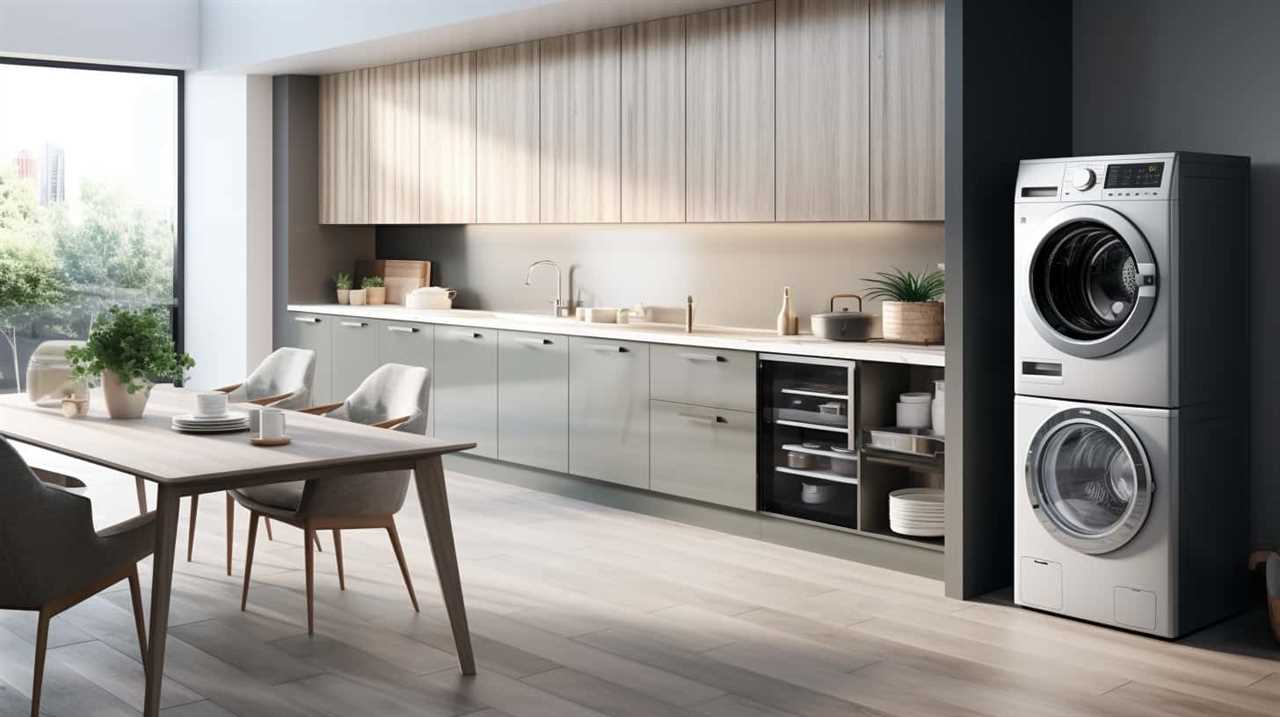
Understanding these various types of smart home appliances is essential for integrating them into a cohesive and efficient system. As the future of smart home appliances unfolds, it’s critical to stay informed about the latest advancements and innovations in order to make informed decisions and fully leverage the potential of this technology.
Types of Smart Home Appliances
To understand the range of smart home appliances available, we can categorize them into different types based on their functionality and purpose. Smart home appliances can be broadly classified into two categories: smart home security and smart home entertainment.
The table below provides an overview of these two types of smart home appliances:
| Smart Home Security | Smart Home Entertainment |
|---|---|
| Smart locks | Smart TVs |
| Security cameras | Smart speakers |
| Motion sensors | Streaming devices |
| Video doorbells | Gaming consoles |
Smart home security appliances are designed to enhance the safety and security of your home. Smart locks allow you to control access to your home remotely, while security cameras and video doorbells provide real-time video monitoring and recording. Motion sensors can detect any unexpected movement and trigger alerts.

On the other hand, smart home entertainment appliances focus on enhancing your entertainment experience. Smart TVs offer a range of features such as voice control, streaming services, and integration with other smart devices. Smart speakers provide voice-activated control for playing music, accessing information, and controlling other smart devices. Streaming devices and gaming consoles allow you to enjoy your favorite movies, TV shows, and games on-demand.
Benefits of Integrating Smart Home Appliances
When it comes to integrating smart home appliances, there are several benefits that can be enjoyed.
Firstly, integrating these appliances can lead to increased energy efficiency in the home. This is because smart appliances are designed to optimize energy usage and reduce wastage.
Additionally, integrating smart home appliances can enhance convenience and comfort, as they can be controlled remotely and programmed to perform tasks automatically.

Increased Energy Efficiency
The increased energy efficiency of integrating smart home appliances is evident in the significant reduction of electricity consumption. By incorporating energy saving tips and utilizing smart home automation, homeowners can effectively manage and optimize their energy usage.
Smart appliances, such as thermostats, lighting systems, and appliances, can be programmed to adjust their settings based on occupancy and time of day, ensuring that energy isn’t wasted unnecessarily. For example, smart thermostats can learn the occupants’ behavior and adjust the temperature accordingly, resulting in reduced energy consumption and lower utility bills. Additionally, smart lighting systems can automatically turn off when no one is in the room, further saving energy.
With the integration of these smart home appliances, homeowners can enjoy a more energy-efficient and sustainable living environment.
Transitioning into the subsequent section, let’s explore how integrating smart home appliances also enhances convenience and comfort.

Enhanced Convenience and Comfort
As we delve into the benefits of integrating smart home appliances, it becomes evident that enhanced convenience and comfort are the key advantages.
Smart home appliances offer customizable settings that allow users to personalize their living spaces according to their preferences. With just a few taps on a smartphone or voice commands to a virtual assistant, homeowners can adjust the temperature, lighting, and even the ambiance of their homes.
Furthermore, smart home appliances provide remote access, enabling users to control their devices from anywhere, at any time. Whether it’s preheating the oven before arriving home or turning off the lights from bed, the ability to manage appliances remotely enhances convenience and comfort.
This level of control and automation not only saves time and effort but also enhances the overall quality of living.

Assessing Compatibility With Existing Infrastructure
When integrating smart home appliances, it’s crucial to assess the compatibility with the existing infrastructure.
This involves evaluating the current infrastructure to determine if it can support the integration of smart devices.
Compatibility considerations include factors such as the communication protocols used by the smart appliances and the availability of necessary connectivity options.
Assessing compatibility helps identify potential integration challenges and allows for proper planning and implementation of the integration process.
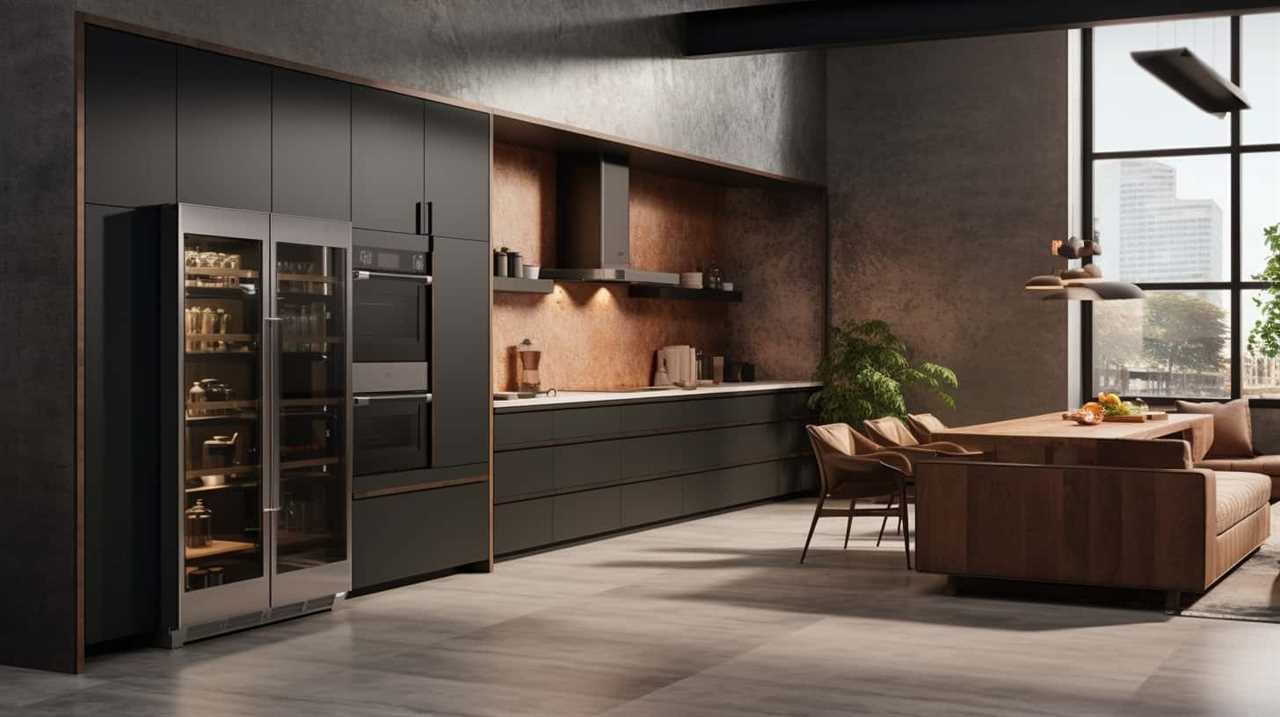
Existing Infrastructure Evaluation
To assess the compatibility of existing infrastructure, we start by evaluating the current setup in our homes. This process involves a thorough examination of the various components and systems that make up our infrastructure, such as electrical wiring, internet connectivity, and communication protocols.
We analyze the capabilities and limitations of these systems to determine their compatibility with smart home appliances. This assessment helps us identify any potential issues or constraints that may arise during the integration process. For example, we may discover that our electrical wiring needs to be upgraded to support the power requirements of certain appliances, or that our internet connection isn’t fast or stable enough for seamless communication between devices.
Compatibility Considerations
During the evaluation process, we assess the compatibility of our existing infrastructure with smart home appliances. Evaluating compatibility is crucial to ensure seamless integration and optimal performance. Here are some key considerations when assessing compatibility:
- Hardware requirements: We examine if our existing infrastructure meets the hardware requirements of the smart home appliances, such as power supply, connectivity options, and communication protocols.
- Network compatibility: We verify if our network infrastructure, including routers and Wi-Fi connections, can support the connectivity needs of the smart home appliances. This involves assessing bandwidth, frequency compatibility, and signal strength.
- Integration capabilities: We investigate if our existing home automation systems or platforms can integrate with the smart home appliances. This includes assessing compatibility with protocols like Zigbee, Z-Wave, or proprietary solutions.
Integration Challenges Assessment
To assess compatibility with our existing infrastructure, we carefully evaluate the integration challenges of integrating smart home appliances. This involves identifying potential issues that may arise during the integration process and assessing whether our existing systems and infrastructure can support the new appliances.

One of the integration challenges is ensuring that the smart home appliances can communicate effectively with our existing network. We evaluate whether the appliances use the same communication protocols and standards as our infrastructure, or if any additional hardware or software is required for compatibility.
Another challenge is the availability of necessary resources such as power and internet connectivity. We assess whether our infrastructure can provide sufficient power and stable internet connection to support the new appliances.
Additionally, we evaluate the compatibility of the smart home appliances with our existing security systems and protocols, to ensure that the integration doesn’t compromise the security of our network.
Choosing the Right Smart Home Hub
We found several essential factors to consider when selecting the right smart home hub. Evaluating compatibility and comparing features are crucial steps in making an informed decision. Here are some key points to keep in mind:
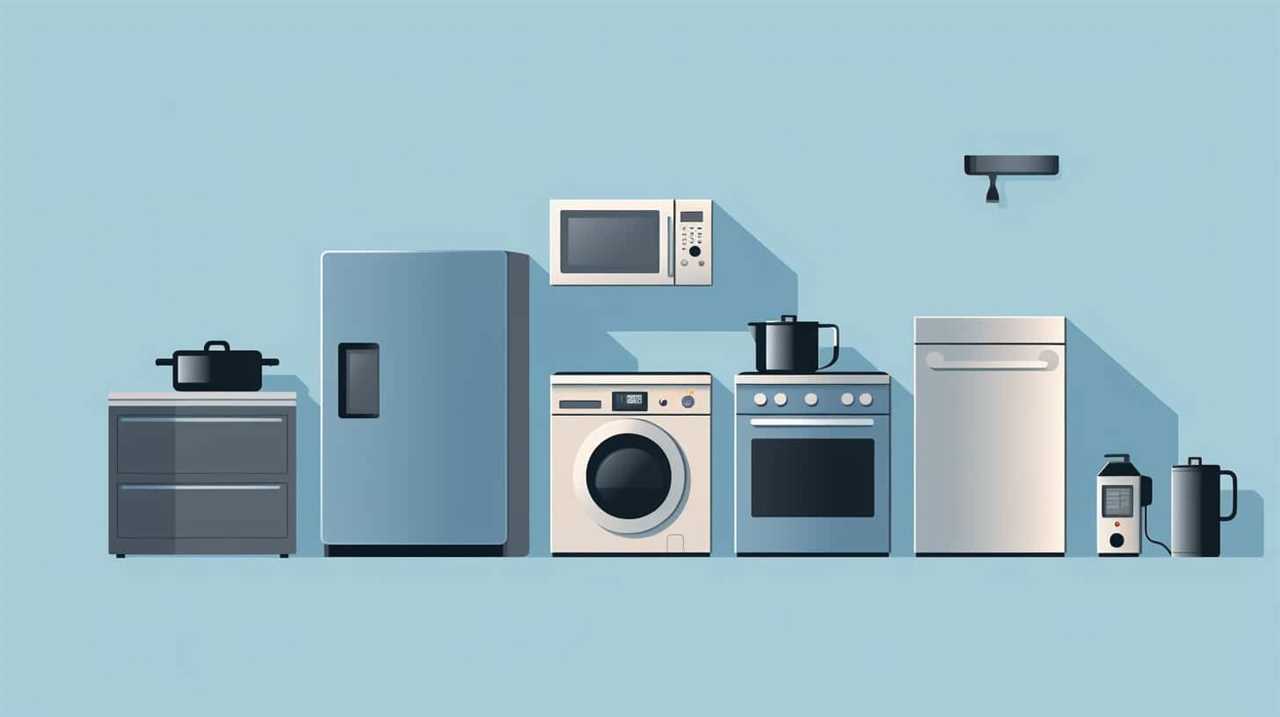
- Compatibility: Ensure that the smart home hub is compatible with the devices and protocols you already have in your home. Check for compatibility with popular systems like Zigbee, Z-Wave, or Wi-Fi. This will ensure seamless integration and avoid any compatibility issues down the line.
- Features: Look for a smart home hub that offers the features you need. Consider factors like voice control compatibility, automation capabilities, and the ability to integrate with third-party services. Some hubs may offer additional features like energy monitoring or security integration, so make sure to prioritize your needs.
- User Interface: The user interface plays a crucial role in your overall experience with the smart home hub. Look for a hub that offers an intuitive and user-friendly interface, both in the mobile app and on the hub itself. This will make it easier for you to control and manage your smart home devices.
Setting Up the Smart Home Hub
After carefully selecting the right smart home hub based on compatibility and features, it is now time to start setting up our smart home hub. The smart home hub setup process involves a few key steps to ensure a smooth integration of our smart home appliances. Let’s take a look at the table below, which outlines the steps involved in setting up the smart home hub:
| Step | Description | Troubleshooting Tips |
|---|---|---|
| 1 | Unbox the smart home hub and plug it into a power source. | Ensure the power source is working properly and check for any loose connections. |
| 2 | Connect the smart home hub to your home Wi-Fi network. | Double-check the Wi-Fi credentials and make sure you’re within range of the network. |
| 3 | Download and install the smart home hub’s companion app on your smartphone or tablet. | Check for any app updates and ensure compatibility with your device’s operating system. |
| 4 | Follow the app’s instructions to complete the setup process, including creating an account and connecting the hub to the app. | If encountering issues, restart the hub and try again or contact customer support for assistance. |
By following these steps and troubleshooting any integration issues, we can successfully set up our smart home hub. Once the hub is set up, we can move on to the next step of connecting our smart home appliances to the hub, which we will discuss in the subsequent section.
In the next section, we will explore the process of connecting smart home appliances to the hub and how to troubleshoot any issues that may arise.
Connecting Smart Home Appliances to the Hub
The first step in connecting smart home appliances to the hub is to identify compatible devices. It’s crucial to ensure that the appliances you intend to connect are compatible with the smart home hub you have chosen. Here are some important points to consider:

- Check the compatibility list provided by the hub manufacturer to see if your appliances are supported.
- Look for appliances that have built-in connectivity options, such as Wi-Fi or Zigbee, as these are commonly supported by smart home hubs.
- Consider using third-party devices, such as smart plugs or adapters, to make non-smart appliances compatible with the hub.
Once you have identified the compatible devices, it’s time to start the integration process. Begin by connecting each appliance to the hub according to the manufacturer’s instructions. This may involve downloading specific apps, entering Wi-Fi credentials, or scanning QR codes. After the initial setup, it’s essential to test each device to ensure successful integration.
If you encounter any issues during the integration process, troubleshooting may be necessary. Common integration issues include connectivity problems, firmware updates, or incompatible software versions. Refer to the hub and appliance manuals or contact customer support for assistance.
With the smart home appliances successfully connected to the hub, the next step is to configure them for automation.
Configuring Smart Home Appliances for Automation
To configure smart home appliances for automation, it’s important to understand the capabilities of the devices. Configuring automation settings allows you to automate various tasks and control your appliances remotely. Most smart home appliances come with built-in automation features that can be customized to suit your preferences.

To begin configuring automation settings, you need to access the device’s control panel or use a dedicated mobile app. From there, you can explore the available options and choose the automation features you want to enable. These features may include scheduling, geofencing, and integration with other smart devices.
Scheduling allows you to set specific times for your appliances to turn on or off automatically. For example, you can schedule your lights to turn on at sunset and turn off at bedtime. Geofencing, on the other hand, uses your smartphone’s location to trigger actions based on your proximity. This can be useful for automatically adjusting the thermostat when you leave or arrive home.
Additionally, many smart home appliances offer remote control options. This means you can control and monitor your devices from anywhere using your smartphone or tablet. Remote control options typically require an internet connection and a compatible app.
Securing Smart Home Appliances and Network
Securing our smart home appliances and network is a top priority. As our homes become smarter, it’s important to take steps to protect our privacy and prevent unauthorized access to our devices and personal information.

Here are some key measures to consider:
- Strong Passwords: Use unique and complex passwords for each smart device and change them regularly. Avoid using default passwords, as they’re often easy to guess.
- Network Segmentation: Separate your smart home devices from your main network by creating a guest network or using VLANs (Virtual Local Area Networks). This helps isolate potential security breaches.
- Firmware Updates: Regularly update the firmware of your smart devices to ensure they have the latest security patches. Check for updates manually or enable automatic updates if available.
Securing our network and smart home appliances is crucial to safeguard our privacy. With the increasing number of connected devices in our homes, there are legitimate concerns about potential vulnerabilities and breaches.
Creating Customized Smart Home Scenarios
When it comes to creating customized smart home scenarios, there are several benefits to consider.
Customization allows homeowners to tailor their smart home automation options to their specific needs and preferences. This means that they can create unique scenarios that enhance their daily routines, promote energy efficiency, and increase convenience and comfort throughout their homes.

Benefits of Customization
By customizing smart home scenarios, we can enhance our living experience and optimize the functionality of our appliances. The benefits of customization are numerous and can greatly improve our daily lives. Here are some advantages of personalized settings:
- Increased convenience: Customizing smart home scenarios allows us to create personalized settings that align with our specific needs and preferences. We can automate tasks, such as turning on lights or adjusting the thermostat, to make our lives more convenient.
- Energy efficiency: With customized smart home scenarios, we can optimize the energy usage of our appliances. We can set timers and schedules to ensure that our devices are only active when needed, reducing unnecessary energy consumption.
- Enhanced security: Customization allows us to integrate security systems seamlessly into our smart home. We can create scenarios that activate alarms, lock doors, and monitor our homes, providing us with peace of mind and enhanced security.
Smart Home Automation Options
To create customized smart home scenarios, we have several options for smart home automation.
One option is to utilize smart home security systems, which allow us to automate various aspects of home security. These systems can include features such as smart locks, surveillance cameras, and motion sensors that can be controlled remotely through a mobile app or voice assistants. By integrating these devices into a smart home ecosystem, we can create customized scenarios that enhance our home security.
For example, we can set up a scenario where the surveillance cameras automatically turn on when we leave the house and the smart locks lock behind us. Voice assistants like Amazon Alexa or Google Assistant can also be used to control and automate various smart home devices, allowing for a hands-free and convenient experience.

With these automation options, we can tailor our smart home to meet our specific needs and preferences.
Integrating Voice Control With Smart Home Appliances
As we explore the process of integrating smart home appliances, we’ll now delve into how voice control can be seamlessly incorporated. Voice recognition technology has become increasingly advanced and is now a popular way to interact with smart home devices. By integrating voice control into your smart home appliances, you can enjoy a hands-free and convenient experience.
Here are three key benefits of integrating voice control:
- Effortless control: With voice recognition, you can effortlessly control your smart home appliances by simply speaking commands. Whether it’s adjusting the thermostat, turning on the lights, or even starting your coffee maker, voice control makes it easy to manage your smart home with just your voice.
- Enhanced accessibility: Voice control provides an accessible solution for individuals with disabilities or limited mobility. It allows them to independently control and interact with their smart home appliances, promoting inclusivity and independence.
- Improved smart home security: Voice control can be integrated with smart home security systems, allowing you to conveniently arm or disarm your alarm, lock or unlock doors, and even check security camera feeds with just your voice. This adds an extra layer of convenience and peace of mind to your smart home security setup.
Monitoring and Controlling Smart Home Appliances Remotely
We can monitor and control smart home appliances remotely using a smartphone or tablet. Remote monitoring allows us to keep an eye on our appliances and receive real-time updates on their status, even when we’re away from home. With remote control, we can also adjust settings, turn appliances on or off, and even create schedules for their operation.

To enable remote monitoring and control, we need to connect our smart home appliances to a central hub or a smart home system. This hub acts as a bridge between our appliances and our smartphone or tablet. By connecting to the same Wi-Fi network, we can access and control our appliances from anywhere with an internet connection.
Many smart home systems provide dedicated mobile apps that allow us to monitor and control our appliances remotely. These apps provide a user-friendly interface where we can view the status of each appliance and make adjustments as needed. Some apps even offer additional features such as energy usage monitoring and notifications for potential issues.
In conclusion, remote monitoring and control of smart home appliances provide convenience and peace of mind. With just a few taps on our smartphones or tablets, we can ensure that our appliances are functioning properly and make any necessary adjustments. This level of control allows us to optimize energy usage, enhance security, and make our lives easier.
Now, let’s explore the next section about troubleshooting common integration issues.

Troubleshooting Common Integration Issues
When encountering common integration issues with smart home appliances, troubleshooting becomes essential for resolving any connectivity problems. Here are some key steps to identify and troubleshoot common integration issues:
- Identifying network connectivity issues: Check if your smart home appliances are connected to the same Wi-Fi network as your smartphone or hub. Ensure that the Wi-Fi signal is strong and stable by moving your router closer to the devices or using signal boosters if needed. You can also try restarting your router or contacting your internet service provider for assistance.
- Troubleshooting device pairing problems: Make sure that your smart home appliances are in pairing mode and follow the manufacturer’s instructions for pairing them with your smartphone or hub. Verify that the devices are compatible with each other and that they’re using the same communication protocol, such as Zigbee or Z-Wave. If the pairing process fails, try resetting the devices and starting the pairing process again.
- Updating firmware and software: Check if there are any firmware or software updates available for your smart home appliances. Updating to the latest version can often resolve compatibility issues and improve overall performance. Visit the manufacturer’s website or use their mobile app to check for updates and follow the instructions for installing them.
Expanding and Upgrading Smart Home Appliance Integration
To further enhance our smart home setup, we can expand and upgrade the integration of our smart home appliances by adding new devices and integrating advanced features. By doing so, we can unlock a multitude of exciting possibilities and expand the capabilities of our smart home system.
One way to expand the integration of our smart home appliances is by adding new devices that are compatible with our existing setup. For example, we can install smart thermostats, smart locks, or smart lighting systems to enhance the automation and control of our home. These devices can be seamlessly integrated into our smart home ecosystem, allowing us to control them through a central hub or our smartphones.
In addition to adding new devices, we can also upgrade the integration of our existing smart home appliances by incorporating advanced features. This can be achieved through software updates or by replacing outdated components with newer ones. For instance, we can update the firmware of our smart speakers to enable voice control of other connected devices or replace our old smart plugs with ones that offer more advanced scheduling and energy monitoring capabilities.

As technology continues to advance, the future developments in smart home appliance integration are promising. We can expect to see more seamless integration between different devices and platforms, as well as enhanced interoperability and compatibility. This will allow us to expand the capabilities of our smart home even further, making our lives more convenient and efficient.
Frequently Asked Questions
How Do I Troubleshoot Common Integration Issues When Integrating Smart Home Appliances?
When troubleshooting common integration issues with smart home appliances, there are several troubleshooting tips and techniques that we can employ. By following these steps, we can resolve any problems that may arise during the integration process.
It’s important to carefully examine the connections, ensure that all devices are compatible, and update firmware if necessary.
Additionally, checking for software updates, resetting devices, and contacting customer support are other effective troubleshooting methods.

What Are Some Common Problems That Can Occur When Connecting Smart Home Appliances to the Hub?
Common problems that can occur when connecting smart home appliances to the hub include:
- Compatibility issues
- Network connectivity problems
- Device malfunctions
Troubleshooting techniques such as:
- Checking for firmware updates
- Ensuring proper Wi-Fi signal strength
- Verifying the correct pairing process
can help resolve these issues.
Additionally, optimizing smart home appliance integration can be achieved by:

- Positioning the hub and devices in close proximity
- Minimizing interference from other wireless devices
- Following manufacturer’s guidelines for installation and setup.
How Can I Expand and Upgrade My Current Smart Home Appliance Integration?
To expand and upgrade our current smart home appliance integration, we need to focus on two key areas:
- Expanding integration capabilities:
- Adding new devices that are compatible with our current hub.
- Exploring options to connect different systems.
- This will expand the range of appliances we can control.
- Upgrading compatibility:
- Upgrading our hub’s software and firmware.
- Ensuring compatibility with the latest smart home technologies.
- This will ensure a seamless integration experience.
Are There Any Specific Security Measures I Should Take to Secure My Smart Home Appliances and Network?
When it comes to smart home appliance security, there are several best practices for securing smart home networks that we should consider.
- It’s crucial to prioritize network encryption and strong passwords to prevent unauthorized access.
- Regularly updating firmware and software is also essential to patch any security vulnerabilities.
- Additionally, enabling two-factor authentication and using a separate guest network for smart devices can further enhance security.
Can I Monitor and Control My Smart Home Appliances Remotely, and if So, How?
Yes, we can monitor and control our smart home appliances remotely.
To do this, we need to ensure that our smart home devices are connected to the internet and have compatible apps or platforms for remote control.

Additionally, it’s crucial to implement proper security measures to protect our devices and network from potential threats. This includes using strong passwords, enabling two-factor authentication, and regularly updating our devices’ firmware to stay protected.
What Are the Key Steps in Integrating Smart Home Appliances?
When it comes to seamless smart home integration, the key steps include selecting compatible devices, setting up a central hub, and configuring all devices to work together. Ensuring that all appliances communicate effectively through a unified system is essential for a smooth smart home experience.
Conclusion
In conclusion, integrating smart home appliances into our daily lives can greatly enhance convenience and efficiency.
According to a recent study, homes with smart home appliances have seen a 30% decrease in energy consumption, leading to significant cost savings and a reduced environmental impact.
By assessing compatibility, choosing the right hub, and utilizing voice control and remote monitoring, we can seamlessly integrate and manage our smart home appliances for a more connected and sustainable living experience.
